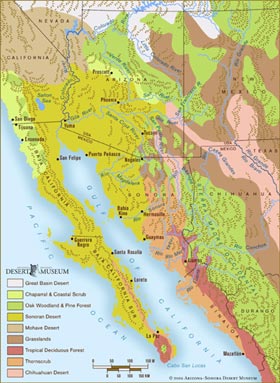The Conservation Education & Science Department conducts the educational and scientific functions of the Museum and is a hub for research, education and conservation of the Sonoran Desert Region.
The CESD activities range from on-grounds and outreach education programs for school children and adults, to conducting ecological research in the Sonoran Desert region and advising museum staff, other conservation organizations, and the public on scientific and educational matters.
The Conservation Education & Science Department is characterized by:
Interdisciplinary studies. Our staff has expertise in educational outreach, botany, ethnobiology, ornithology, mammalogy, herpetology, invertebrate biology, ecology, and earth sciences.
Scientific accuracy and currency. All of our publications and educational programs are based on the latest, most accurate research data available.
Collaboration with the people of Mexico in research, education, and conservation. About two-thirds of the land portion of the Sonoran Desert, and 75 percent of its biodiversity, reside in Mexico; the vast majority of species and habitats that the Museum works to understand and protect lie south of the border.
Focus on whole-organism and community biology.
Projects that promote habitat conservation. We recognize that fulfilling the Museum's mission of inspiring people to live in harmony with the natural world requires both a conservation ethic and timely, collaborative and well-informed action.
Dedication to disseminating our knowledge to the public in nontechnical language.
A variety of educational methods. Since we know people have many different learning styles and interests, we maximize our outreach by mixing different techniques like place-based learning, experiential and inquiry-based education, incorporation of live animals and natural artifacts, and attention to creating and encouraging life-long learners.
